Track
In recent years, Machine Learning Operations (MLOps) has emerged as one of the most sought-after fields in the tech industry. With businesses increasingly relying on data-driven solutions, MLOps professionals are in high demand to deploy and manage machine learning models effectively.
But what exactly is MLOps, and what does it take to become an MLOps engineer?
In this guide, we'll cover everything you need to know about MLOps and provide a complete roadmap to kickstart your journey in this exciting field.
What is MLOps?
MLOps, also known as machine learning operations, refers to the practices and processes used for deploying, managing, and monitoring machine learning models in production. It combines elements from machine learning, software engineering, and operations to create a streamlined workflow for ML projects.
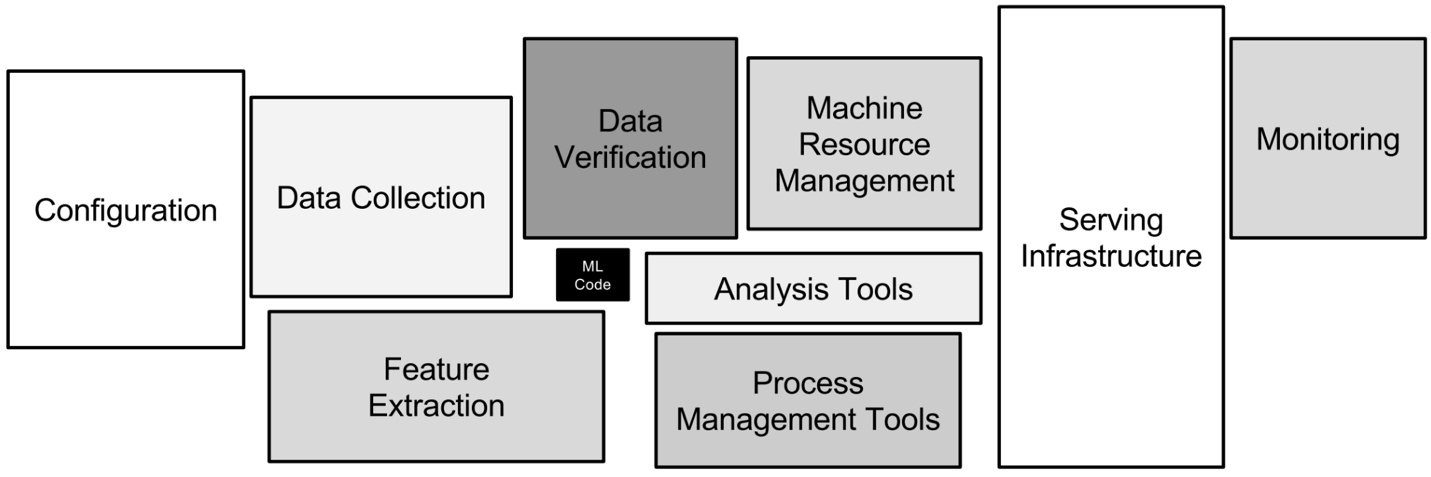
The goal of MLOps is to bridge the gap between data scientists and IT teams, ensuring that machine learning models can be deployed quickly, reliably, and at scale. This is crucial for businesses looking to leverage the potential of AI and ML in their operations.
Key Components of MLOps
MLOps comprises various stages and components that work together to deliver a successful machine learning project.
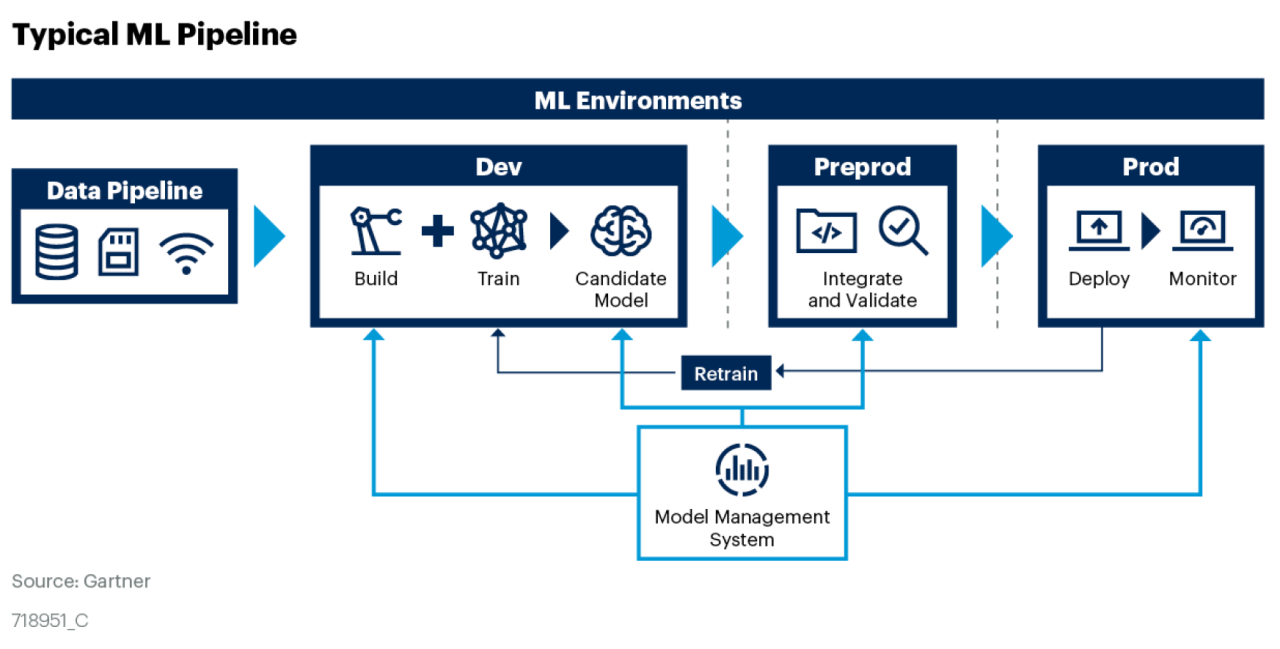
These typically include:
- Data Preparation: This involves acquiring, cleaning, and organizing data for use in training ML models.
- Model Training: In this stage, data scientists develop and fine-tune ML models using algorithms and techniques such as supervised learning, unsupervised learning, and reinforcement learning.
- Model Deployment: Once a model is trained and tested, it needs to be deployed into production, where it can make predictions on real-time data.
- Monitoring and Maintenance: MLOps also involves monitoring the performance of deployed models, detecting any issues or anomalies, and maintaining them to ensure they continue to produce accurate results.
Want to learn more about how to deploy models and not sure where to start? Our MLOps Deployment and Life Cycling course provides a good foundation to help you get started.
1. Building Foundational Skills
Before diving straight into MLOps directly, you'll likely need to build up a robust knowledge base in core data science skills as well as some computing knowledge.
Here are some skills you'll need to acquire:
Python programming
Python’s elegance and simplicity make it the language of choice for data analytics and machine learning. Its libraries and frameworks, such as Pandas and Scikit-learn, facilitate complex data operations and machine learning processes with remarkable ease, underpinning many MLOps tasks.
Mastery of Python is a must for MLOps deployment. It serves as a platform for automating workflows and engineering robust ML models.
An MLOps engineer must know how to use Python to integrate with APIs and databases, design efficient algorithms, and implement modular programming principles to build scalable machine learning solutions.
Here’s a basic Python cheat sheet for those new to Python:
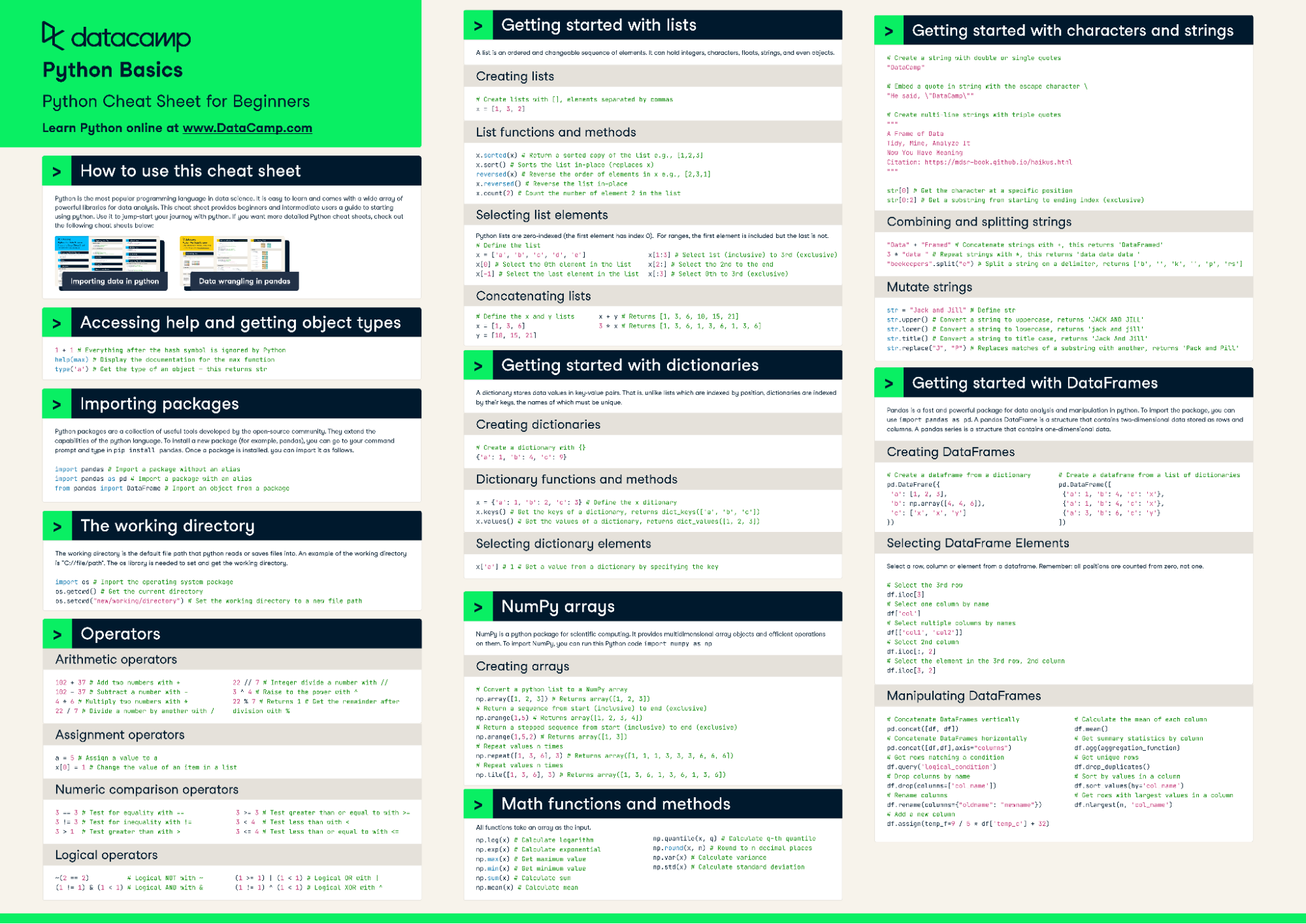
In the landscape of MLOps, Python also extends into the realm of model-serving frameworks such as TensorFlow Serving or Flask, which are critical for deploying models into production environments.
Adopting such tools demands a deep command of Python, as MLOps professionals must not only create but also effectively monitor and update models throughout their operational lifecycle.
For a starter guide to Python, do check out our Machine Learning Fundamentals with Python skill track.
Data management
When considering MLOps, data management is also another foundational pillar. It ensures the integrity and availability of data essential for informed decision-making and model reliability.
As an MLOps engineer, you must understand how to organize and store data effectively, usually in a cloud environment. This often involves working with various databases such as SQL and NoSQL.
Moreover, managing large datasets requires knowledge of tools such as Apache Spark for distributed data processing. Familiarity with data warehousing and ETL (Extract-Transform-Load) processes is also necessary for handling data at scale.
Core machine learning concepts
Next, you'll need to have a good grasp of all the core machine learning concepts, such as supervised, unsupervised, and reinforcement learning.
You'll also need to be familiar with feature engineering and selection to ensure the right data is fed into your models. This will play a big part in getting the best model performance for your use case.
When optimizing models, you'll have to be good at looking at the bias, variance, and bias-variance tradeoff.
A deep understanding ensures that models are both accurate and generalize well to new, unseen data, mitigating overfitting or underfitting.
In addition, you should also get familiar with model evaluation metrics such as:
- Accuracy
- Precision
- Recall
- F1-score
- ROC curves
- Area Under Curve (AUC)
Version control & CI/CD pipelines
Version control systems help with the smooth running of operations when running multiple machine learning model pipelines.
They also enable team collaboration, safeguarding the consistency and integrity of code and model iterations.
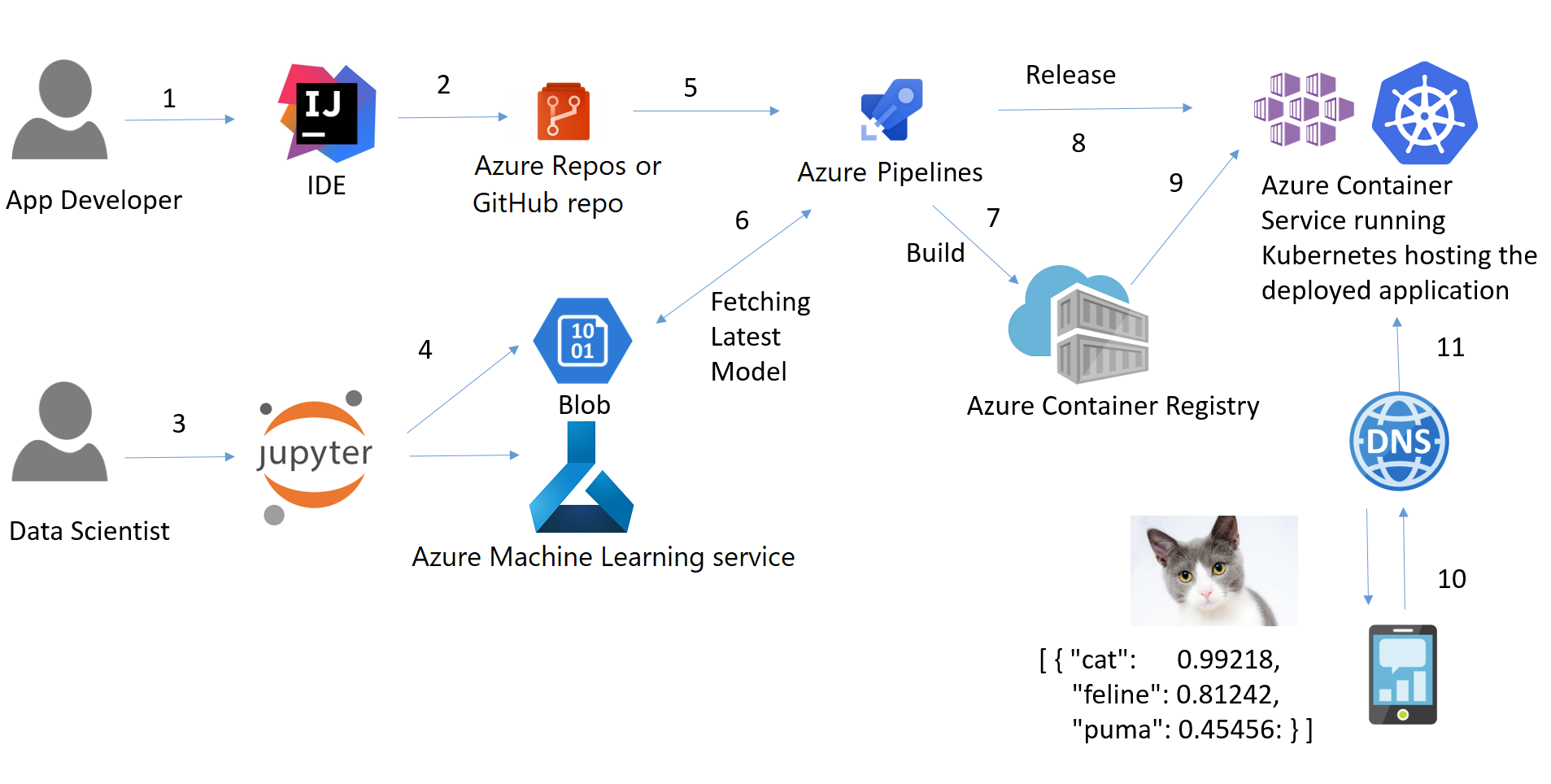
CI/CD pipeline - source
Using tools such as Git is also critical for managing codebases effectively.
Integration of Continuous Integration (CI) with version control also helps with setting up automated model training and testing processes. This promotes early detection of issues, ensuring robust model development before deployment.
Orchestration
Another key skill to learn in MLOps is orchestration. Orchestration in MLOps refers to the systematic coordination and management of machine learning workflows.
This involves:
- Workflow Scheduling: Establish automated schedules to run training and evaluation jobs at predetermined intervals.
- Dependency Management: Ensure all tasks respect the sequence of operations and data dependencies to maintain workflow integrity.
- Resource Allocation: Automate the distribution of computational resources for different tasks to optimize for efficiency and cost.
- Monitoring and Logging: Implement continuous monitoring of the orchestration pipeline, recording system metrics and logs.
- Error Handling and Recovery: Design workflows to gracefully handle failures, with strategies for automatic retries or fallbacks.
To carry out such tasks, orchestration tools like Kubernetes or Apache Airflow are typically used.
Model deployment & monitoring
Next, no MLOps project is complete without the ability to deploy and monitor models.
Deploying a model means making it available in a production environment where it can make real-time predictions on new data.
This usually involves creating APIs or microservices, which are productively accessible by other applications in an organization.
Monitoring models allow for identifying issues such as drifts or performance degradation, providing timely alerts for proactive debugging.
Containerization is one way to ensure models are deployed well in MLOps, streamlining both development and operations.
For good containerization, here are some best practices:
- Define Container Images: Start by crafting a container image, which is a lightweight, standalone, and executable software package.
- Manage Containers: Utilize platforms like Docker and Kubernetes to create, deploy, and manage containers with ease and agility.
- Ensure Portability: Containers encapsulate the runtime environment, ensuring consistency across different infrastructures.
- Facilitate Microservices Architecture: Implement microservices to enhance scalability and fault isolation by segmenting applications into smaller, containerized services.
- Integrate Continuous Integration/Continuous Deployment (CI/CD) Pipelines: Automate the deployment process for containerized applications, ensuring robust and repeatable builds.
DevOps
DevOps stands as a set of practices that combines software development and IT operations, aiming to shorten the system development life cycle and provide continuous delivery with high software quality.
To implement MLOps, you'll need to synergize DevOps with machine learning workflows. This means using development best practices such as version control systems and agile methodologies.
Moreover, having a solid understanding of Linux commands is crucial in managing cloud-based infrastructure where most MLOps projects are deployed.
Here are some examples of practices to consider
- Automate and Integrate: Establishing a culture where building, testing, and releasing software can happen rapidly, frequently, and reliably.
- Collaboration and Communication: Fostering a collaborative environment is crucial for aligning developers and operations teams.
- Continuous Integration/Continuous Deployment (CI/CD): Implement pipelines that automate the software release process, from code commit to production.
- Monitoring and Logging: Keep a constant eye on the system with robust monitoring and logging practices to preemptively spot and solve issues.
- Performance Metrics: Measure application and infrastructure performance to ensure customer satisfaction.
In the MLOps context, DevOps principles ensure data pipelines and machine learning models are developed, deployed, and monitored effectively.
2. Gaining Practical Experience
Just like learning any technical tool, the next step is to practice. This will involve two stages—learning individual tools and working on hands-on projects.
Learn MLOps tools and platforms
To navigate the multifaceted domain of MLOps, one must become proficient in various tools and platforms designed to streamline the machine learning lifecycle.
- Data Version Control (DVC) - Manages data sets, machine learning models, and experiments with version control capabilities.
- MLflow - Facilitates the ML lifecycle, including experimentation, reproducibility, and deployment. Learn more on DataCamp’s MLflow course.
- Kubeflow - A Kubernetes-native platform for deploying scalable machine learning workflows.
- TensorFlow Extended (TFX) - An end-to-end platform that orchestrates TensorFlow data pipelines.
- Apache Airflow - A tool for orchestrating complex computational workflows and data processing pipelines.
- Docker - Essential for creating and sharing containerized environments, ensuring consistency across developmental and production systems.
- Kubernetes - A container-orchestration system for automating application deployment, scaling, and management.
- Prometheus & Grafana - For monitoring the performance of models and infrastructure.
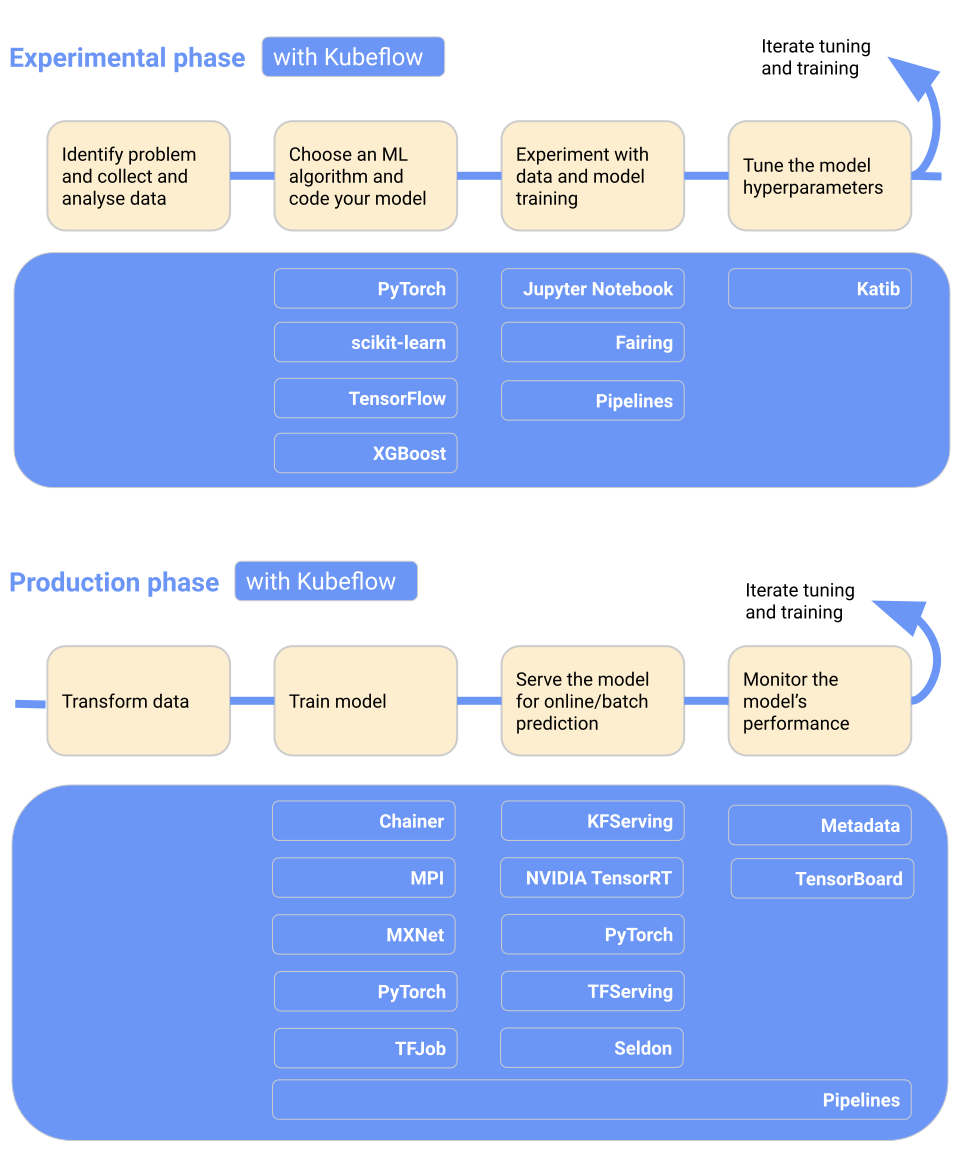
For a full guide, do read our article on the top MLOps tools for a better understanding.
If you're unsure where to get started, this webinar guide to MLOps will be helpful!
Hands-on projects
Try setting up your own MLOps environment, working on some sample projects, and getting familiar with the tools you've learned about here.
You can also challenge yourself to build a complex end-to-end machine learning pipeline on a cloud platform like Amazon Web Services or Google Cloud Platform.
Moreover, there are many online resources that provide real-world scenarios for practicing and honing your MLOps skills, such as Kaggle and DataCamp's MLOps Fundamentals skill track.
3. Certification and Training Programs
Once you feel comfortable with the fundamental principles and tools of MLOps, you can take it a step further by pursuing certification or training programs.
These programs provide structured learning, hands-on experience, and validation of your skills to potential employers.
Some popular options include:
- DataCamp's MLOps for Production course: This course provides comprehensive training on implementing MLOps practices in a production environment using tools such as DVC, MLflow, and Kubernetes.
- TensorFlow Certification: TensorFlow certification demonstrates proficiency in applying TensorFlow to build and train deep learning models.
- Microsoft Certified: Azure AI Engineer Associate: This certification validates one's ability to design and implement artificial intelligence (AI) solutions using Microsoft Azure tools and services.
If you're not ready to commit to a full certification, a standalone course like DataCamp's MLOps Concepts course will be a good introduction.
4. Industry Networking and Community
Networking and community building are crucial in any field, especially one as dynamic and evolving as MLOps. Here are some ways to get involved within the industry:
- Join online communities: Join forums like Reddit's r/MLOps or Slack channels like Kubeflow Slack, which provide a platform for discussing latest trends, asking questions and sharing knowledge.
- Attend conferences: Attend industry events like the KubeCon + CloudNativeCon to learn from industry experts, network with like-minded individuals, and stay updated on the latest advancements.
- Participate in hackathons and challenges: Participate in hackathons and coding challenges focused on MLOps to test your skills, network with fellow participants, and potentially win prizes.
With continuous learning and active participation in the MLOps community, you can stay updated and build a strong network to support your career growth.
Final Thoughts
To wrap things up, let's have a look at what we've covered:
- MLOps is a set of best practices and tools that bring together software development (DevOps) and machine learning to streamline the ML lifecycle.
- Implementing DevOps principles in MLOps ensures efficient collaboration, automation, monitoring, and performance optimization.
- Gaining practical experience involves learning various MLOps tools and platforms, working on hands-on projects, and seeking out opportunities for practice and growth.
- Certification and training programs provide structured learning and validation of skills in MLOps.
- Networking and community involvement are essential for staying updated, building a strong network, and advancing one's career in MLOps.
In this exciting and growing field, there's always something new to learn and explore. Keen to learn more? Have a go at our MLOps Concepts course to kickstart your learning today.

I'm Austin, a blogger and tech writer with years of experience both as a data scientist and a data analyst in healthcare. Starting my tech journey with a background in biology, I now help others make the same transition through my tech blog. My passion for technology has led me to my writing contributions to dozens of SaaS companies, inspiring others and sharing my experiences.
